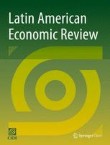US–Mexico border tourism and day trips: an aberration in globalization?
We examine the influence of two distinct regime changes in US border security on the number of persons traveling from the US into Mexico on day trips. In contrast to increases in overall US tourism to Mexico a...
